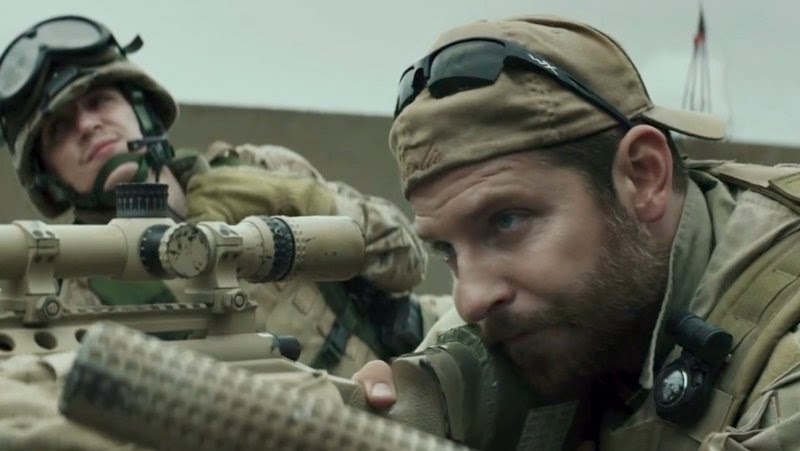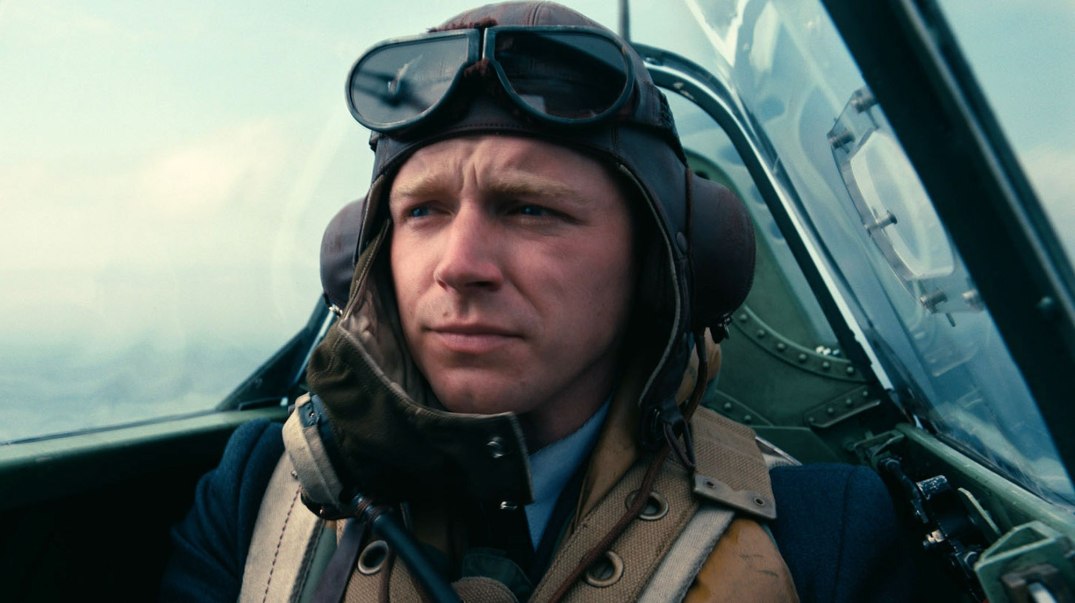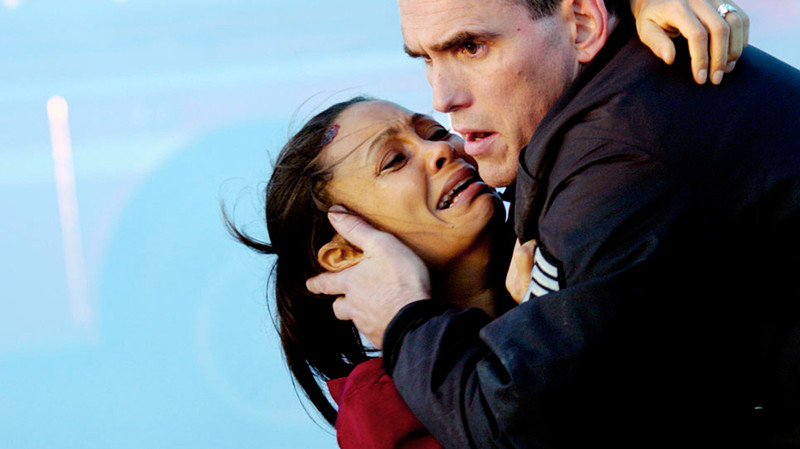5. American Sniper (2014)

American Sniper isn’t so much a war movie as it is a flag-waving symbol of jingoism at its finest. It’s not really a biopic either, as it presents its subject, Chris Kyle, a heavily-decorated Navy sniper with a purported 255 kills (only 160 of which were confirmed by the Department of Defense), as a sort of mythical figure.
In doing so, director Clint Eastwood and screenwriter Jason Hall completely disregard the facts whenever it’s convenient to depict Kyle as a symbol of nationalistic ideals and heroism. He’s not a real person in this film; certainly not the racist and outright liar his autobiography reveal him to be. (One bogus claim involves Kyle perched atop the Superdome, killing approximately thirty black looters during the Hurricane Katrina aftermath. Another depicts him punching out former Minnesota governor Jessie Ventura. His estate actually got sued over that one.)
Despite these things, the film received six Academy Award nominations, including Best Picture, Best Adapted Screenplay, and Best Actor (Bradley Cooper), taking home a single statuette for Best Sound Editing.
Bradley Cooper does a terrific job here, elevating what little he’s given to work with, somehow making Kyle a sympathetic character. It’s largely the strength of Cooper’s performance that enables audiences to overlook the ridiculous situations in the film, including the presence of an opposing “bad guy” sniper, whom Kyle eventually bests in a scene no one has ever been able to verify as being even remotely true.
In post-9/11 America, many Americans have embraced nationalism, seeking out the imaginary ideals of a non-existent better time in history. This has led to many things, mostly bad, including the creation and eventual embracing of this mediocre film.
4. Dunkirk (2017)

This Christopher Nolan-helmed war film depicts Operation Dynamo, in which nearly 350,000 Allied soldiers evacuated the heavily-attacked beaches of Dunkirk with their lives intact. Most of them escaped via civilian boats and merchant ships, comprising a hastily-assembled fleet. This episode has become the stuff the legend, and like most legends, it has been distorted and mythologized over time.
In most tellings of these events (this film included), the fact that Adolf Hitler made the intentional decision to allow the troops to leave without heavy interference is left out of the story. Most critics hailed Nolan’s film as a cinematic achievement, and it has received eight Academy Award nominations, including Best Picture and Best Director. Will it win? Time will tell.
Dunkirk is extremely overrated. It’s another decent outing by Nolan, but it’s arguably his weakest film to date. We won’t even get into the aforementioned historical inaccuracies. The film focuses on an event involving 350,000 soldiers trapped on a beach, yet it’s clear when watching the film that there are significantly fewer soldiers present. (It appears that there are no more than a few thousand, at best.)
Several of the characters’ dialogue is completely unintelligible. Tom Hardy’s face and voice are obscured, which is interesting because Nolan did the same thing to Hardy’s character in The Dark Knight Rises (2012). (What do you have against Tom Hardy, Mr. Nolan?) Truly great war films like Saving Private Ryan (1998) and Platoon (1986) work because they have subplots within the horrors of war, as well as multi-dimensional characters an audience can actually invest in. (Question: does anyone remember a single character’s name from Dunkirk? No, and there’s a reason for this.) At the end of the day, Dunkirk isn’t even 2017’s best film about the subject of the Dunkirk evacuation. (See: The Darkest Hour.)
3. Avatar (2009)
![]()
When James Cameron’s epic 3-D science-fiction film arrived in theaters, it broke records and became an incredible success. Despite being made with a budget of nearly $300 million, it still managed to make truckloads of cash for 20th Century Fox, becoming the first film ever to make more than $2 billion. But the Avatar love didn’t stop there.
When awards season came around, the film received nine Academy Award nominations, including noms for Best Picture and Best Director. These nominations yielded three Oscars for Best Art Direction, Best Cinematography, and Best Visual Effects.
Now jump ahead to 2018, where no one, ever, talks about Avatar. (This may change once Cameron’s poorly-timed sequels are released in 2020 and 2021, but at the time of this writing no one cares about it.)
At the end of the day, looking back at Avatar without all the media hype that surrounded it, the film is essentially a retelling of Pocahontas (1995) with lots of green screens, excessive use of computer-generated imagery, and mediocre writing. (Unobtainium, anyone?) It’s an enjoyable viewing of the B+ variety, but it’s not deserving of the hype and accolades it received at the time of its release. Let’s just chalk it up to mass hysteria, shall we?
2. The Passion of the Christ (2004)

When The Passion of the Christ was released in 2004, Christian audiences flocked to theaters. Many churches took their entire congregations to screen it, and a great many parents took their small children. (Children who were, by any objective measurement, too young to be watching the horrifically gory events depicted in the film, even if it was about Jesus.) In many cases, the same people who would normally speak out against a film as violent and bloody as this, championed it for its unflinching depiction of these atrocities. For many Christians, the film was an eye-opening experience that caused them to reevaluate and rededicate their lives to Christ.
Despite its power in accomplishing those things, it’s a movie with no plot. It has only one act, which basically consists of James Caviezel’s Jesus being tortured and crucified in sickening detail for most of its running time. It’s like Hostel (2005) without a plot; it’s “torture porn,” which exists solely for the purpose of depicting graphic violence and torture.
Director Mel Gibson’s motives (converting non-Christians to his faith) will be seen as being noble to many, but no matter the motives behind it, The Passion of the Christ is still a poorly-crafted, anti-Semitic film with no plot, consisting of 127 minutes of extreme brutality and graphic torture.
1. Crash (2004)

Audiences were divided when Crash was released in 2004 between those who absolutely loved it and those who absolutely hated it. There seemed to be no middle ground. Beloved Chicago Sun-Times film critic Roger Ebert applauded Crash, calling it the best film of the year. On the flip side, Ta-Nehisi Coates of The Atlantic called it “the worst movie of the decade.”
The film would ultimately gross $53.4 million and take home the Oscar for Best Picture, becoming the lowest-grossing film (domestically) to win the award since The Last Emperor (1986). In a year that also included Brokeback Mountain, Munich, and Good Night, and Good Luck (all 2005, all superior), Crash’s Best Picture win angered a lot of people. But today, a decade-and-a-half later, it’s a different story; most everyone now agrees Crash was mediocre at best, and no one seems able to explain why so many people loved and defended it at the time of its release.
The problem is that Crash isn’t really a movie—it’s a two hour anti-racism message packaged as an actual movie. Screenwriter/director Paul Haggis’ intentions were good, and its message is still (sadly) relevant, but that doesn’t change what the film objectively is.
The intersecting plots and scenarios are half-baked and the staggering number of ridiculous coincidences are beyond ludicrous. Its performances are mostly terrific, but the characters the actors inhabit are cliched and lack any real depth. Crash isn’t the worst movie ever made—far from it, in fact—but it’s certainly the most overrated movie of the past twenty years.